1. Formal Dining Rooms
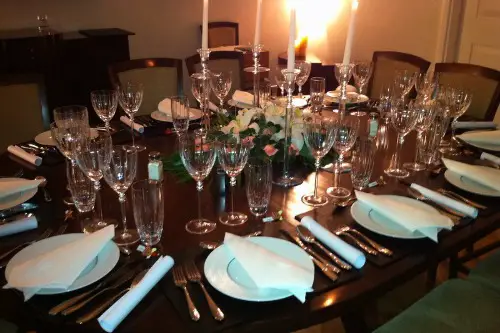
Once a sign you’d made it, the formal dining room was the crown jewel of a well-appointed home. Think elaborate table settings, ornate china cabinets, and chairs no one dared actually sit in. But nowadays, most of these rooms sit unused—eclipsed by open-concept kitchens and multi-purpose spaces. Entertaining has gone casual, and the idea of a room just for occasional dinner parties feels dated.
The shift started as families got busier and prioritized flexible layouts over ceremony. Many homeowners now repurpose dining rooms as home offices or playrooms. Real estate listings even brag when a dining room has been opened up. Turns out, wealth today looks more like functionality than formality.
2. Whirlpool Tubs
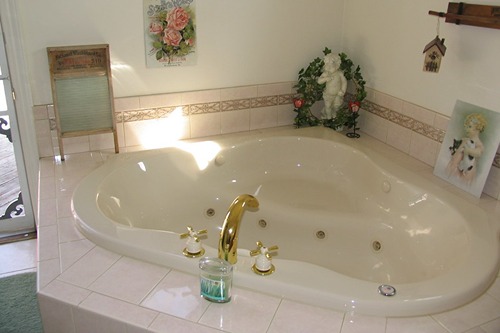
In the 1990s and early 2000s, no luxury master bathroom was complete without a huge whirlpool tub. They were marketed as spa-like sanctuaries—a place to soak your stress away. But in reality, most people used them once, found them hard to clean, and never went back. They’re bulky, noisy, and consume a lot of water.
These days, large walk-in showers with rain heads and built-in benches are taking over. They’re easier to use daily, more efficient, and still feel high-end. Meanwhile, the old jetted tubs are often covered in dust, sometimes even used as makeshift laundry baskets. Practicality wins again.
3. Granite Countertops
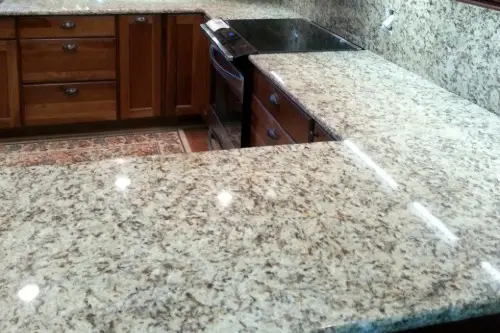
Granite was once the gold standard in upscale kitchens, signaling taste and money. It came in deep, glossy patterns that practically shouted “custom build.” But now? It’s become so mainstream that it’s lost its luxury luster.
Quartz, butcher block, and even recycled materials are taking over, offering low-maintenance and eco-friendly alternatives. Plus, granite’s busy patterns can feel visually overwhelming in today’s minimal aesthetic. Many younger homeowners even associate it with their parents’ kitchens. What was once aspirational now feels a little… outdated.
4. Chandeliers in Every Room
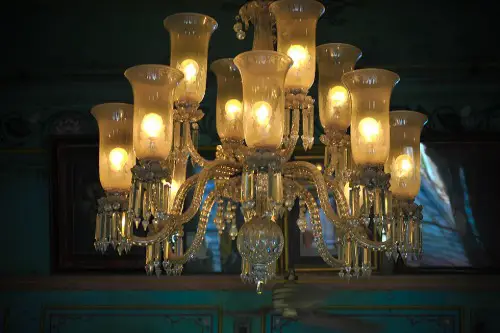
A chandelier in the foyer? Glamorous. A chandelier in the bathroom? Excessive—and surprisingly common in luxury builds from the early 2000s. They used to signal sophistication, but now they mostly gather cobwebs and feel out of place.
Modern design favors clean lighting lines and smart fixtures over ornate crystal showpieces. Today’s wealthy opt for layered lighting with dimmable LEDs and sculptural pendants. Chandeliers still have their place, but only when done with intention. Otherwise, they scream “trying too hard.”
5. Built-In Entertainment Centers
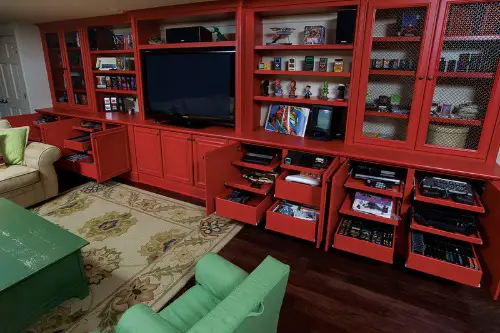
Back when TVs were chunky and DVDs needed storage, a massive built-in entertainment center made sense—and made a statement. Wall-to-wall wood cabinets housed stereo systems, collections, and giant box TVs. But flat-screens and streaming services changed all that. Now those built-ins often just sit there, clunky and outdated.
Modern homeowners prefer floating consoles or wall-mounted TVs. The aesthetic has shifted to open and minimal, with less visual clutter. Built-ins now often get torn out during renovations. They’ve gone from must-have to make-it-go.
6. Floor-to-Ceiling Drapes
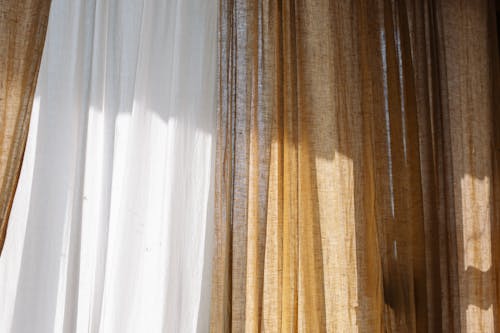
These dramatic window treatments once evoked luxury hotels and stately homes. Heavy velvet or silk curtains, often paired with valances and tiebacks, made windows feel like a centerpiece. But in today’s design world, they mostly feel dusty—both literally and stylistically.
Natural light and simplicity are the new status symbols. People want linen panels or even bare windows, especially in homes with great views. The old drapes block light and require constant upkeep. Now, they’re more of a hassle than a flex.
7. Wine Cellars
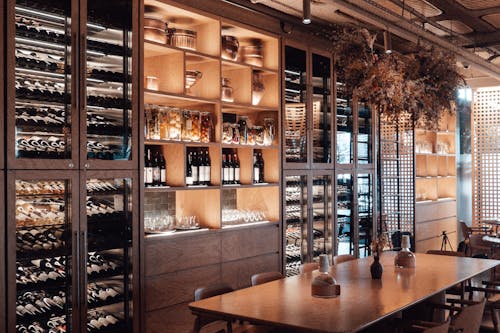
Nothing said affluence quite like your own wine cellar, complete with racks, temperature controls, and maybe even a tasting nook. It told guests you didn’t just drink wine—you collected it. But for most people, the wine cellar has become a space that rarely gets used, especially as drinking habits shift. Many younger buyers prefer less formal entertaining and more curated bars or beverage fridges.
Also, climate-controlled wine cellars are costly to maintain and can eat into usable square footage. They’re still impressive, but they’re no longer the default luxury add-on. Portable wine fridges now do the job with less drama. Unless you’re a serious oenophile, the cellar just collects dust.
8. Wall-to-Wall Carpeting
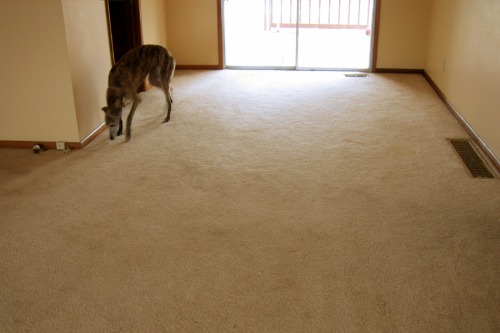
In the ’80s and ’90s, nothing said comfort like a plush, wall-to-wall carpet—especially if it was white or pale beige. It suggested you didn’t have to worry about muddy shoes or messy kids. But carpet has fallen out of favor fast, replaced by hardwood, vinyl planks, or polished concrete. It’s just not practical anymore.
Carpet traps dust, allergens, and odors, and it’s notoriously hard to keep clean. Today’s luxury means easy-to-clean floors with area rugs that can be swapped out. Carpeting is still used occasionally in bedrooms, but rarely anywhere else. The more high-maintenance it is, the less modern it feels.
9. Intercom Systems
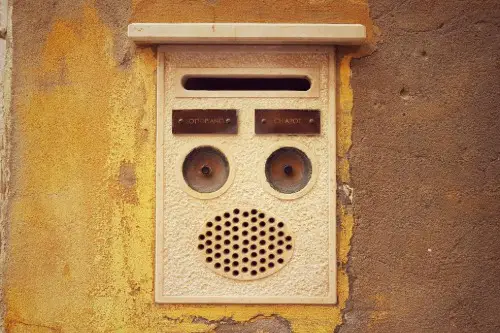
A built-in intercom used to be the epitome of futuristic convenience. You could buzz someone from the kitchen to the garage without yelling! But now, those wall-mounted boxes just sit there, disconnected and unused. Smart speakers and cell phones made them obsolete practically overnight.
Today, communication at home is instant and wireless. Intercom panels are now often patched over during remodels. It’s a classic case of tech that didn’t age well. If anything, they date a house more than they upgrade it.
10. His-and-Hers Closets
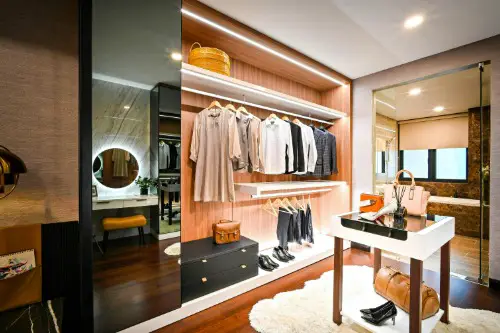
Back in the McMansion era, dual walk-in closets were a symbol of indulgent space and marital harmony. It wasn’t just about storage—it was about separate storage. But now, that square footage is often reallocated to bigger bathrooms or multifunctional spaces. Plus, fast fashion means people just don’t need as much closet space as before.
Modern designs lean into streamlined, shared wardrobes and smarter organization systems. The concept feels outdated in an era more focused on minimalism and sustainability. These oversized closets are often left half-empty or repurposed. Once the envy of suburban couples—now kind of a spatial overkill.
11. Home Gyms with Built-Ins

Custom-built home gyms with wall mirrors, mounted TVs, and rubber flooring once symbolized serious commitment—and serious cash. But now? They often sit unused, especially if the equipment is outdated or the room has poor ventilation. People realized they didn’t need a dedicated gym to stay fit.
Portable fitness gear, subscription apps, and yoga mats now rule the scene. That dedicated gym room is often turned into an office, nursery, or guest space. Plus, once the novelty wears off, the equipment becomes more of a dust collector than a health booster. Luxury is about flexibility, not just square footage.
12. Grand Staircases
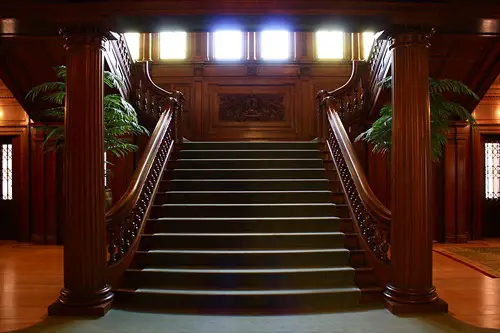
You know the type—double-height entryway, sweeping bannister, maybe even a Juliet balcony above. These stairs made a big first impression and screamed “custom build.” But unless you’re filming a prom entrance, they don’t serve much purpose anymore. They take up tons of space and can be a safety hazard for kids or older adults.
Today’s high-end homes focus on thoughtful flow, not theatrical architecture. Sleek staircases with clean lines are more in vogue, often tucked off to the side. The grand staircase feels like a leftover from another era. It’s more about nostalgia than necessity now.
13. Outdoor Kitchens
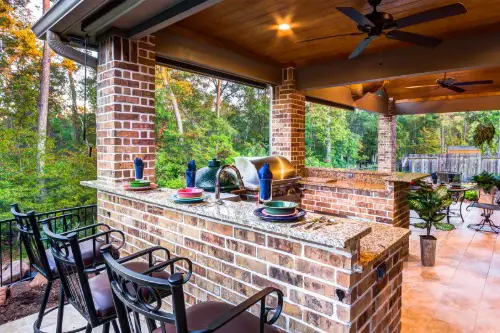
For a while, an outdoor kitchen—grill, sink, mini fridge, maybe even a pizza oven—was a must for anyone aiming to impress. It showed you were serious about hosting. But unless you live in a year-round temperate climate, these spaces often go unused for most of the year. Maintenance is also a big issue, especially for built-in appliances.
Modern entertaining trends favor portable grills and flexible seating areas. People want adaptability, not a second full kitchen exposed to the elements. Outdoor kitchens now often become glorified storage areas. They may look fancy, but they’re frequently impractical.
14. Faux Finishes and Textured Walls
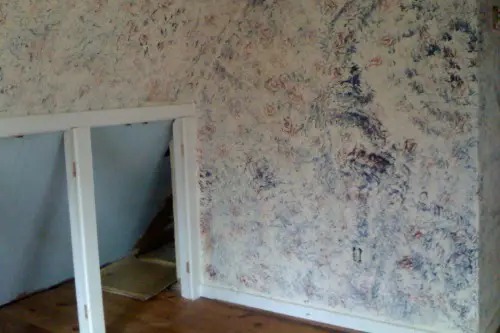
At one time, having faux Tuscan finishes or sponge-painted walls was peak sophistication. It felt worldly, artistic—even European. But now, all those textured walls and glossy surfaces look incredibly dated. They’re hard to repaint, tough to clean, and instantly age a space.
Contemporary luxury leans toward flat, matte, and neutral tones. Think clean plaster or minimalistic paneling over Venetian drama. Removing these finishes is a top priority in many remodels. Once seen as high-end, they’ve become one of the first things people want to undo.
This post 14 Things That Used to Signal Wealth in U.S. Homes—Now They Mostly Just Get Dusty was first published on American Charm.


